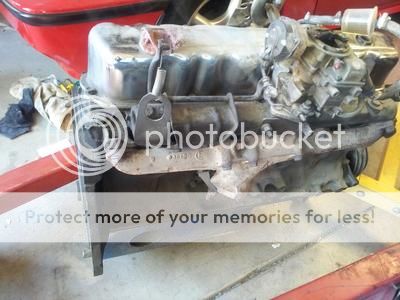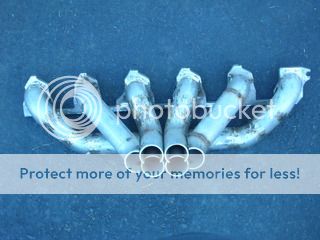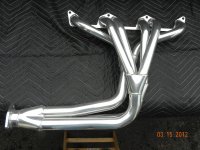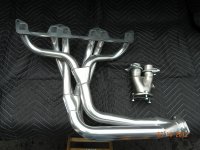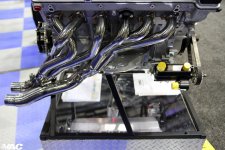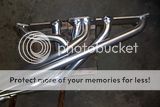Three types.
Ideal Type 1
The primo is the very best iron Jag XKE/Aston Martin style style, which Holden sort of copied in the 179 X2, 2650/161s, 2850/186S, the 3300/202 XU1 GTR, and the XT5/XT6 carb 2.85/3.3 engines.To improve the Holden set up, just a iron port divider has to be welded into each of the two out lets, Ian Tate style. That makes the exhaust a twin branch 3 into 1 header. (When the front and back banks are split with a welded in divider, that is worth 10 hp at engines around the 216 hp Bathurst mark and triple carb, but the cut down 3-bbl engines with three 45mm DCOE with each second barrel deactivated made the engines 230 hp. Most of the difference was the split iron header exhast, not the hot HX cam. The difference between the 1972 and 1973 was
just the welded in divider).
Ideal Type 2
And then the 1985 Holden 3.3 VK Commodore Electronic Injection header
See
http://img514.imageshack.us/img514/8836/1002732wo2.jpg
This makes the best low end torque with hardly any expense to top end power, and was designed for the two EGR port Holden
Its used in many pre cross flows, like this, with brilliant results
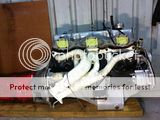

Type 3
The ages old stock tube header, a twin out let, dual 3 into 1 item.
This always looses torque at some engine rpms (compared to the best Type 1 or Type 2 header in iron or tube), and sometimes peak power too
http://www.ebay.com.au/itm/Holden-Commo ... 3cdd2b2a5f
The big foot ball converter B and X code exhaust found on the 3.3 Foxes after 1981 model year had a large single outlet

which can be divided up two or four ways. The single 4.25" hole can then run two exhast pipes, sort of like this Opel 1900 twin carb header

one under the sump like this






